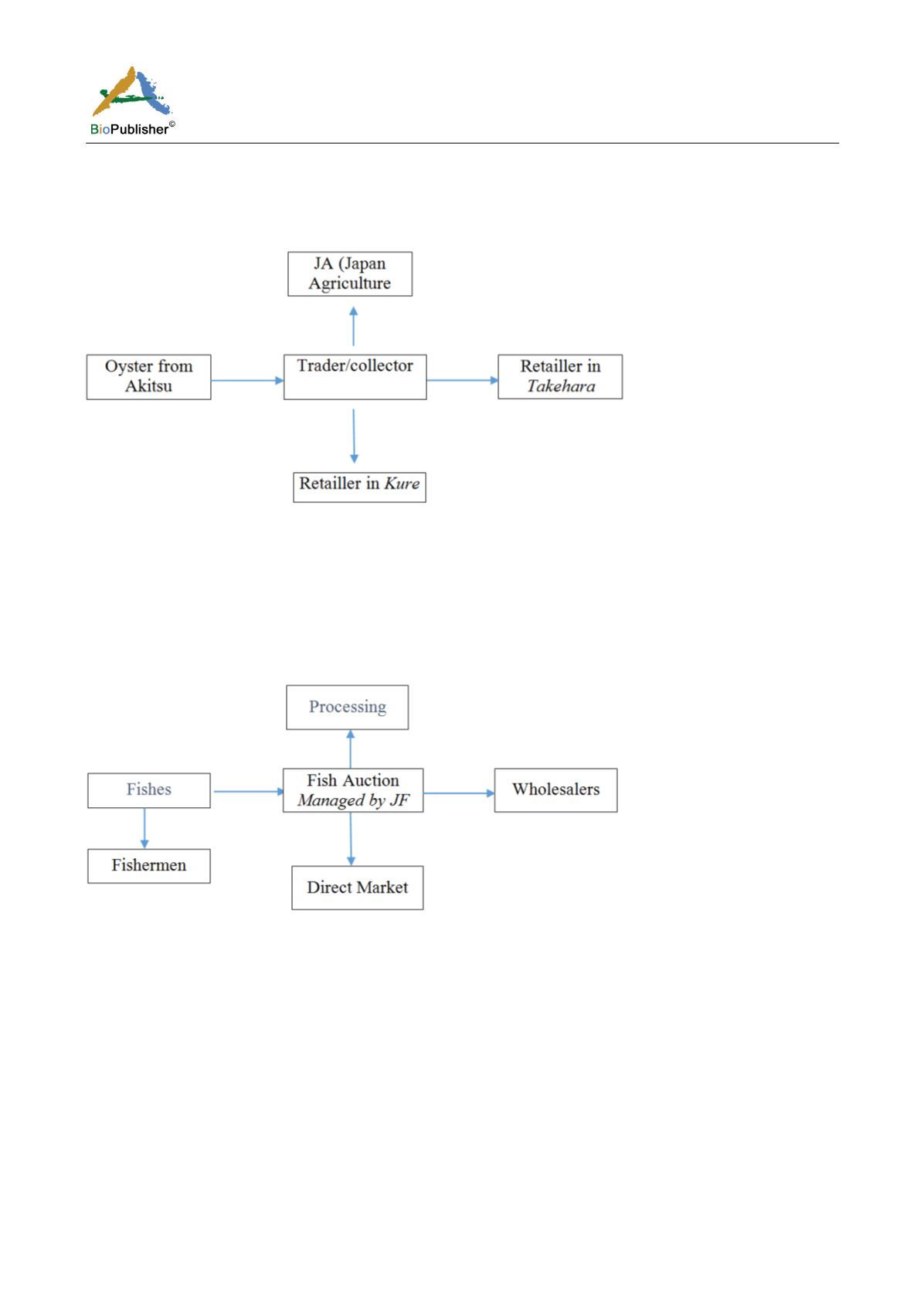
International Journal of Marine Science, 2017, Vol.7, No.38, 371-379
375
product. Wholesalers exist because they are able to provide the most effective and efficient distribution process
than all other channel participants (Torii and Nariu, 2004; Rosenbloom, 2007). Accessibility and risks of the
product-market chain depended on market structure, size, expected demand levels and the nature of competition
(Roberts and Stekoll, 1993).
Figure 2 Distribution channel of Fresh Oyster from Akitsu
Chou
(town)
In Okayama
Prefecture
, fishermen selling fishes to wholesalers was preceded with auction which managed by
Japan Fisheries (JF) of Hinase. Moreover, fishermen were also distributed the fishes to local market (direct market)
and processing for souvenier or cafetaria (Figure 3). The traders or collector and farmers are doing mutual
cooperation unlike the pass period (i.e. exploitation). Since consignment fish-sales between fisheries cooperative
association (FCA) got a good result, financial status of FCA was stabilized, and mutual trust and support among
fishermen were improved, cooperation between fishermen and traders were also improved (Yamamoto, 1995).
Figure 3 Fishes Distribution in JF Hinase, Okayama
Prefecture
Figure 3 above have a similarity with fish distribution from fishermen to consumers in Indonesia. In
Bali-Indonesia, fishes distribute from fishermen through action and then delivered to fish processing company
(boiled and canned). In other way, the fish from fish –auction distribute to fish trader or middlemen, then deliver
to boiled fish-processing (home industry), cold storage and fish market (Zamroni, 2015).
There are three main fisheries products in Okayama, namely seaweed (
nori
), Fish (Spanish Mackarell) and Oyster.
The fishermen are using set net and beach seine to catch the fishes. However, the problem in capture fisheries in
Okayama Prefecture is decreasing the number of fishing units. In fisheries management area of Hinase, the
number of fishing boat decreased from 13 units in 1985 to 6 units in 2016. It is due to the number of fishermen are
decreased as well as altering livelihood activity to oyster farming. It was emphasized by Schmidt (2003) that 42%
of Japanese fishermen in 1998 were over 60 years old, and it was predicted that the elder fishermen leave fishing
industry but they are not replaced by younger age groups. Changes on livelihood activity of fishermen are also
occured in some fishing community of Indonesia. Such as Zamroni and Yamao (2014) mentioned that some


